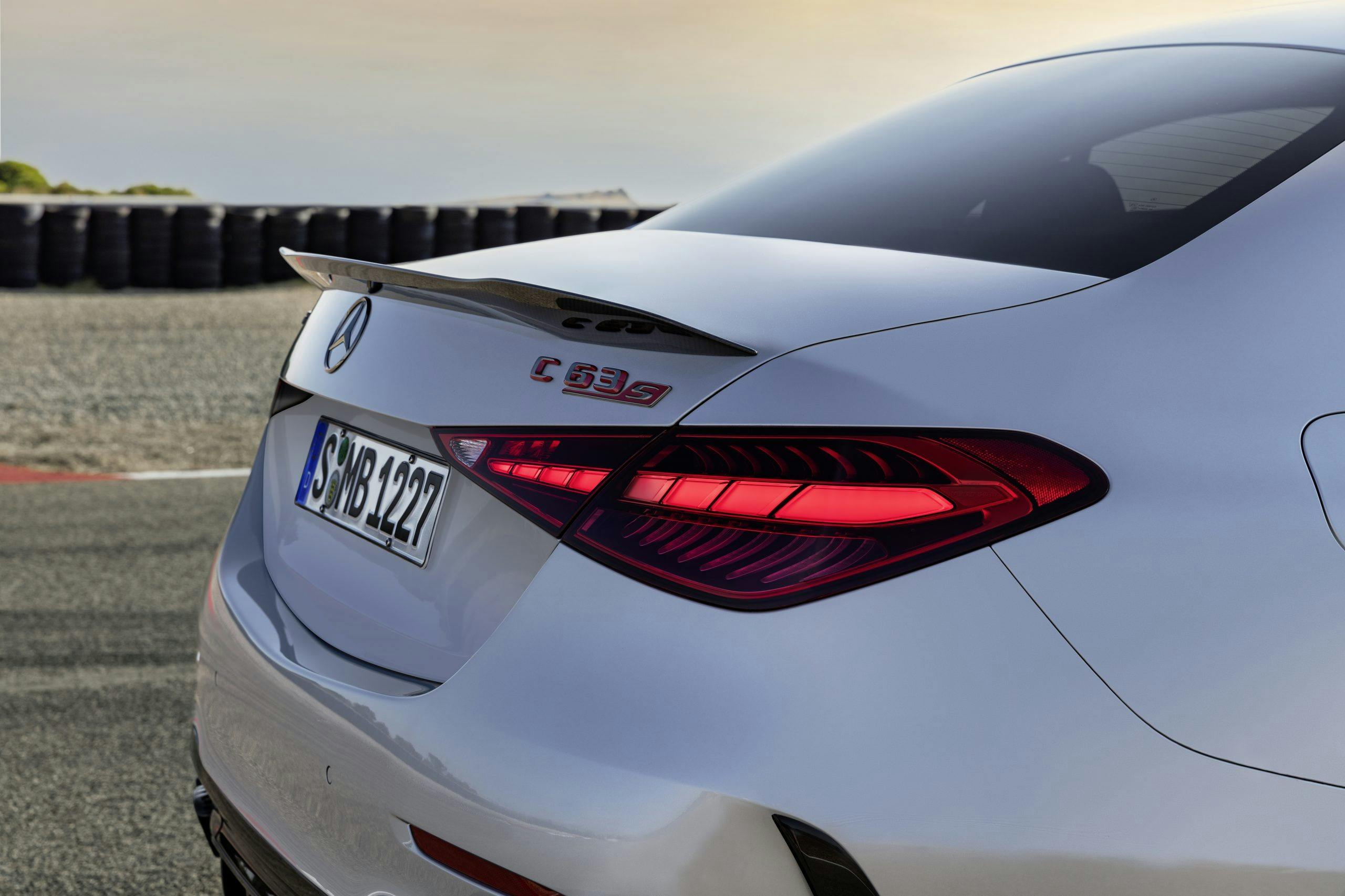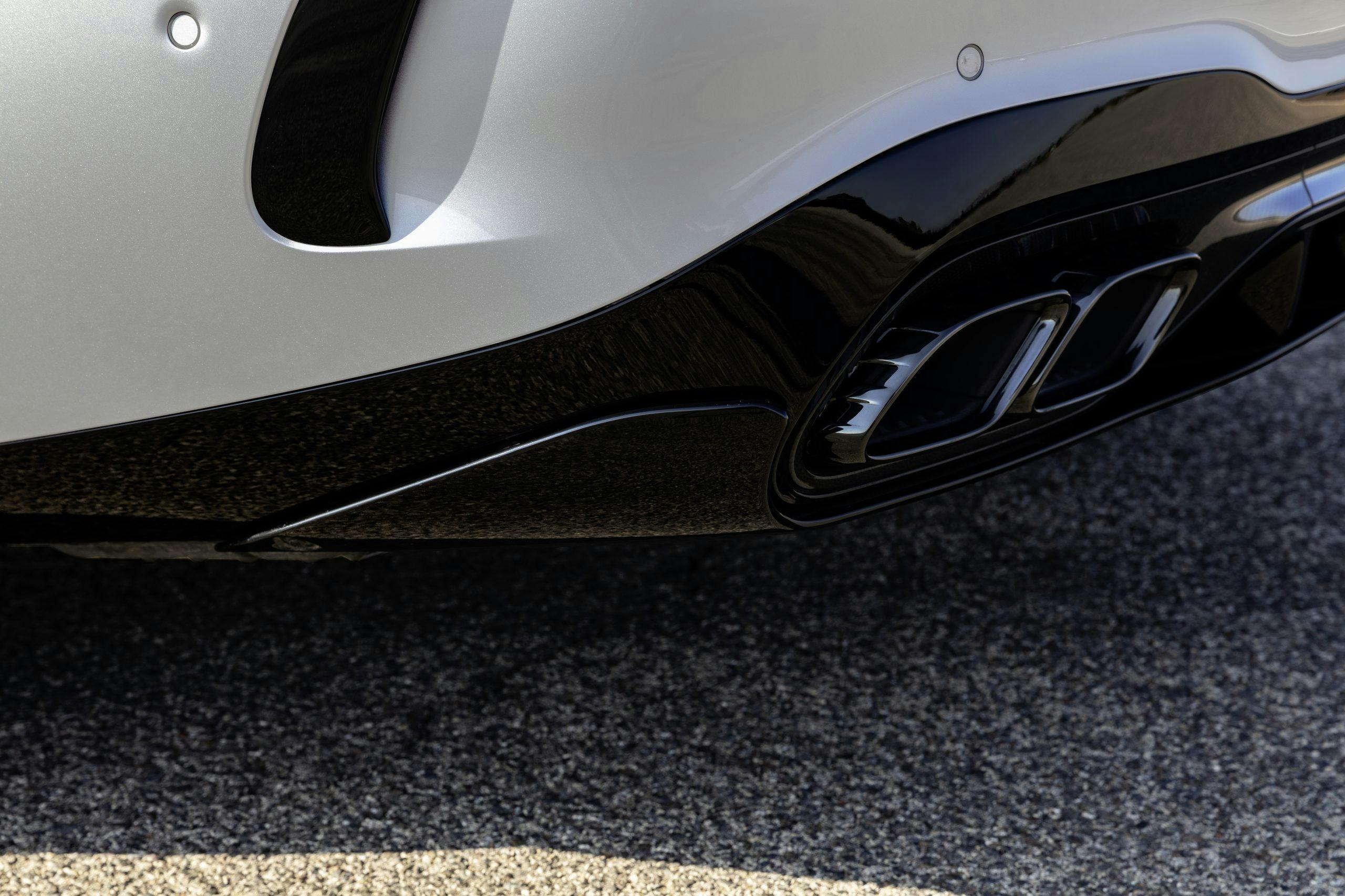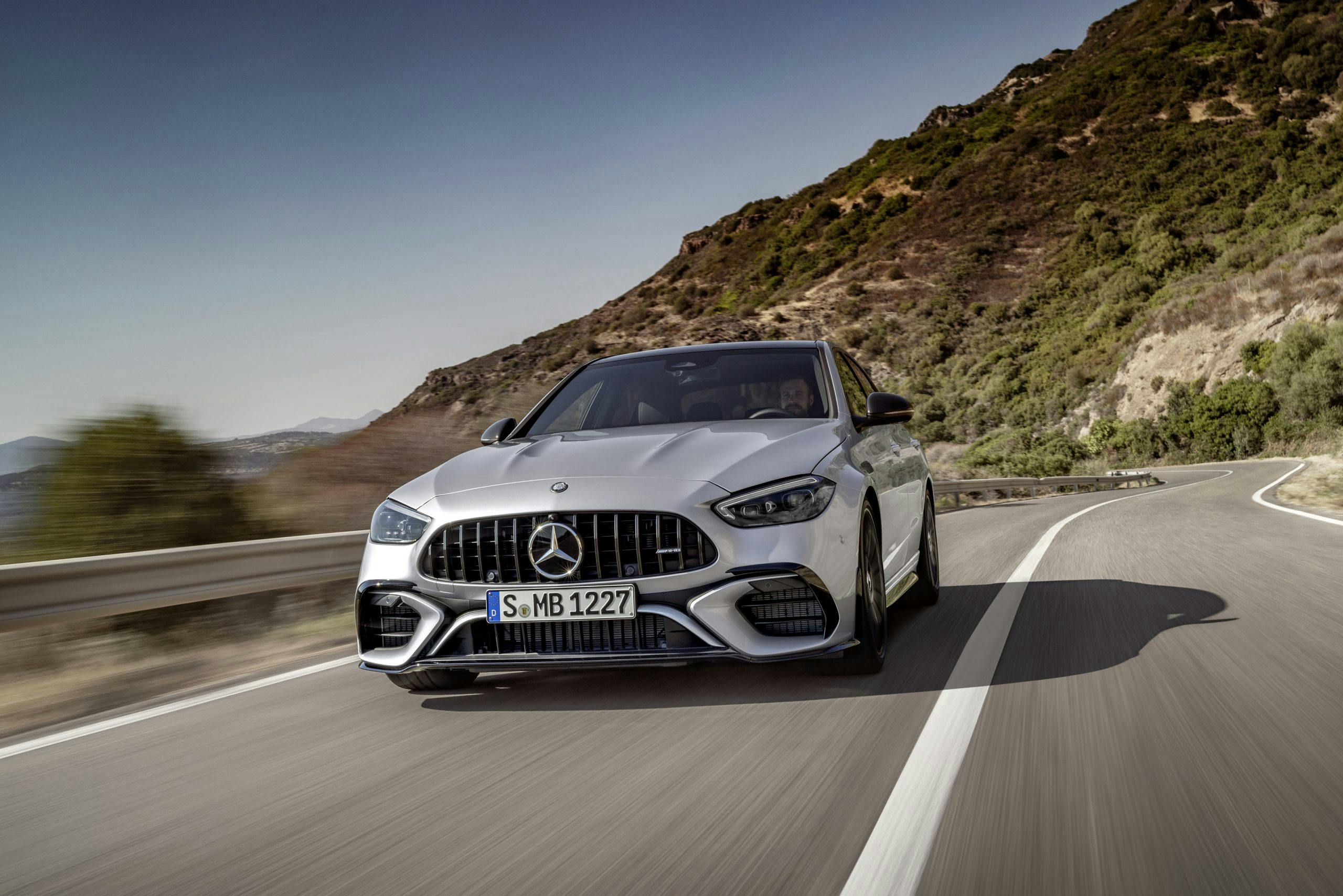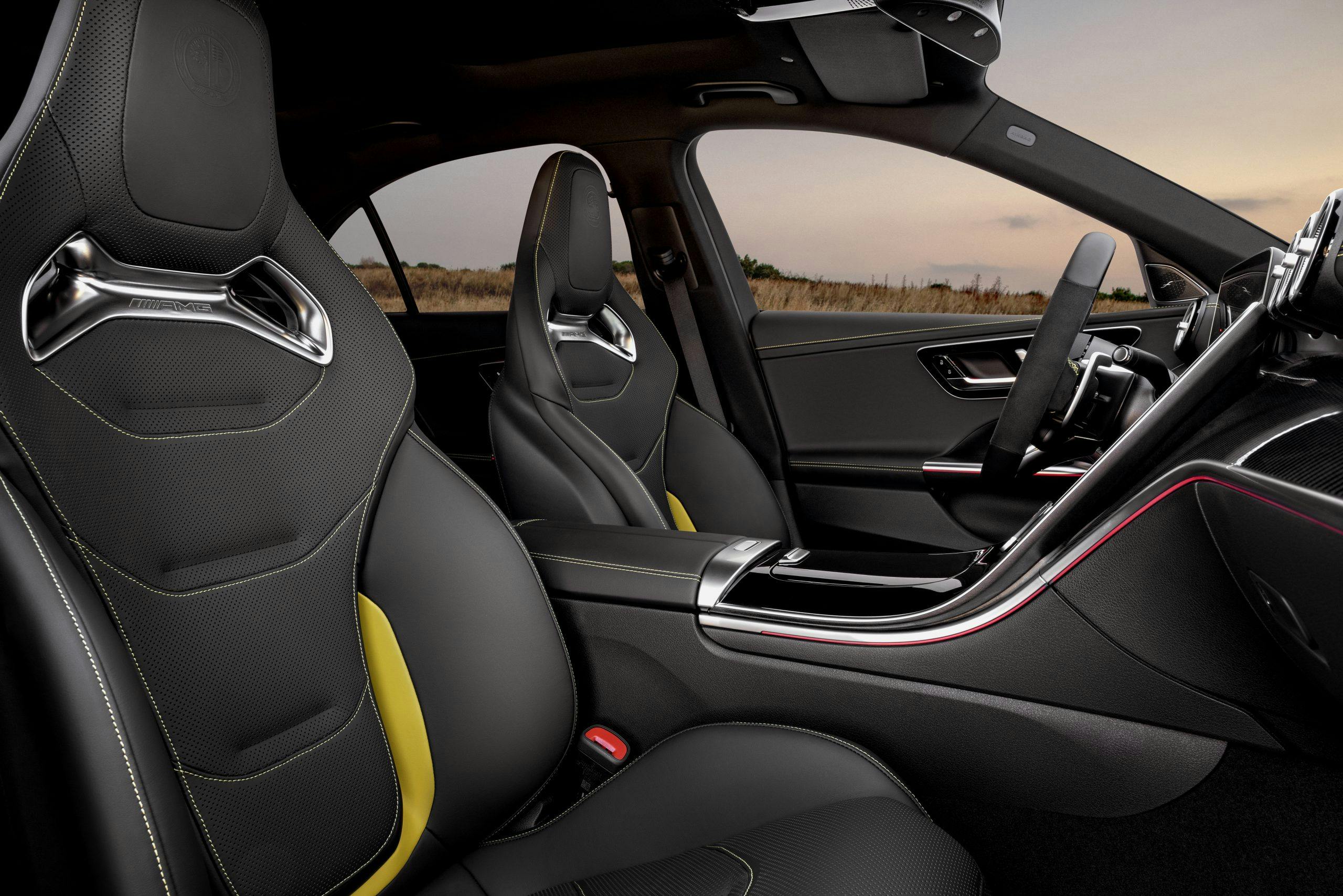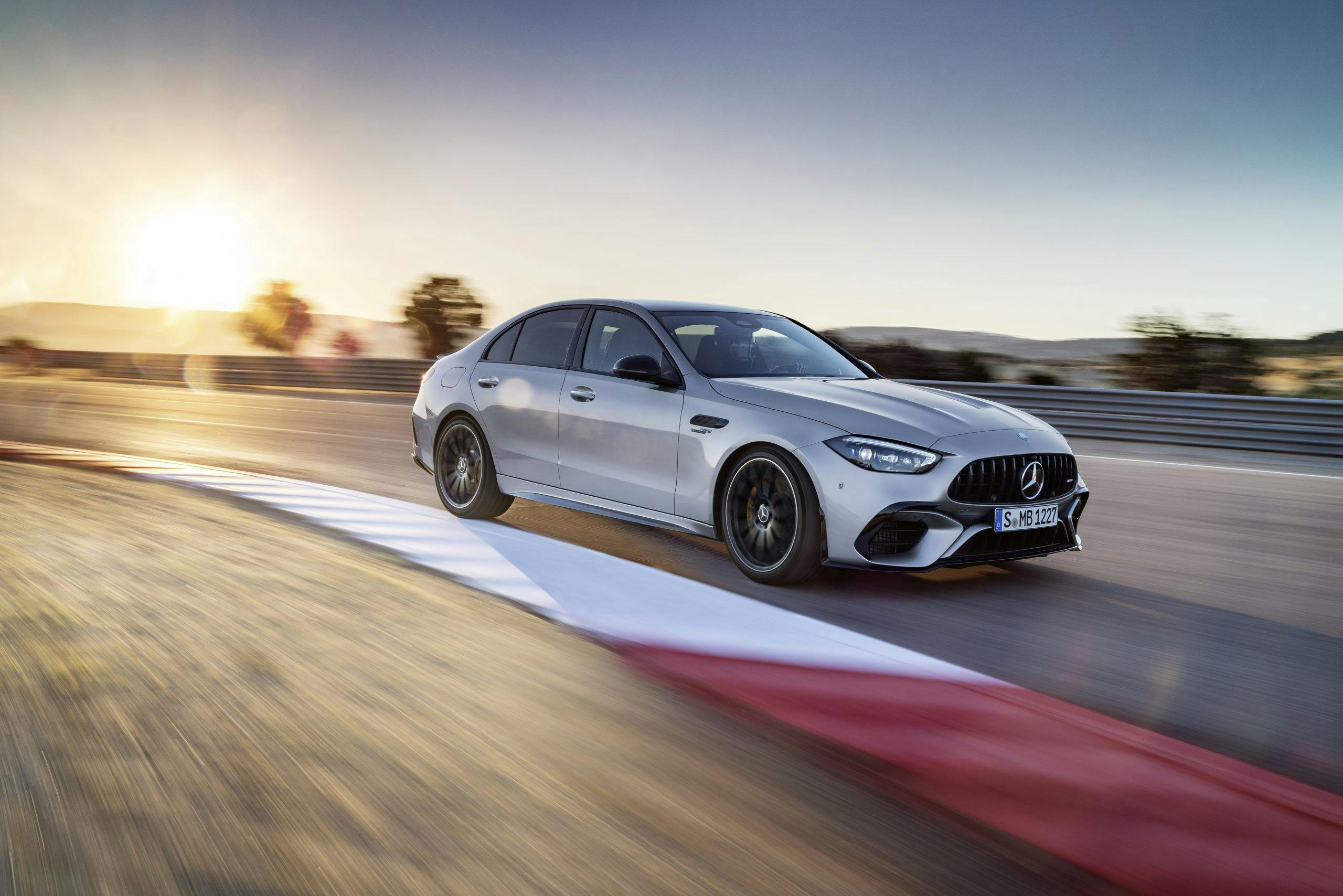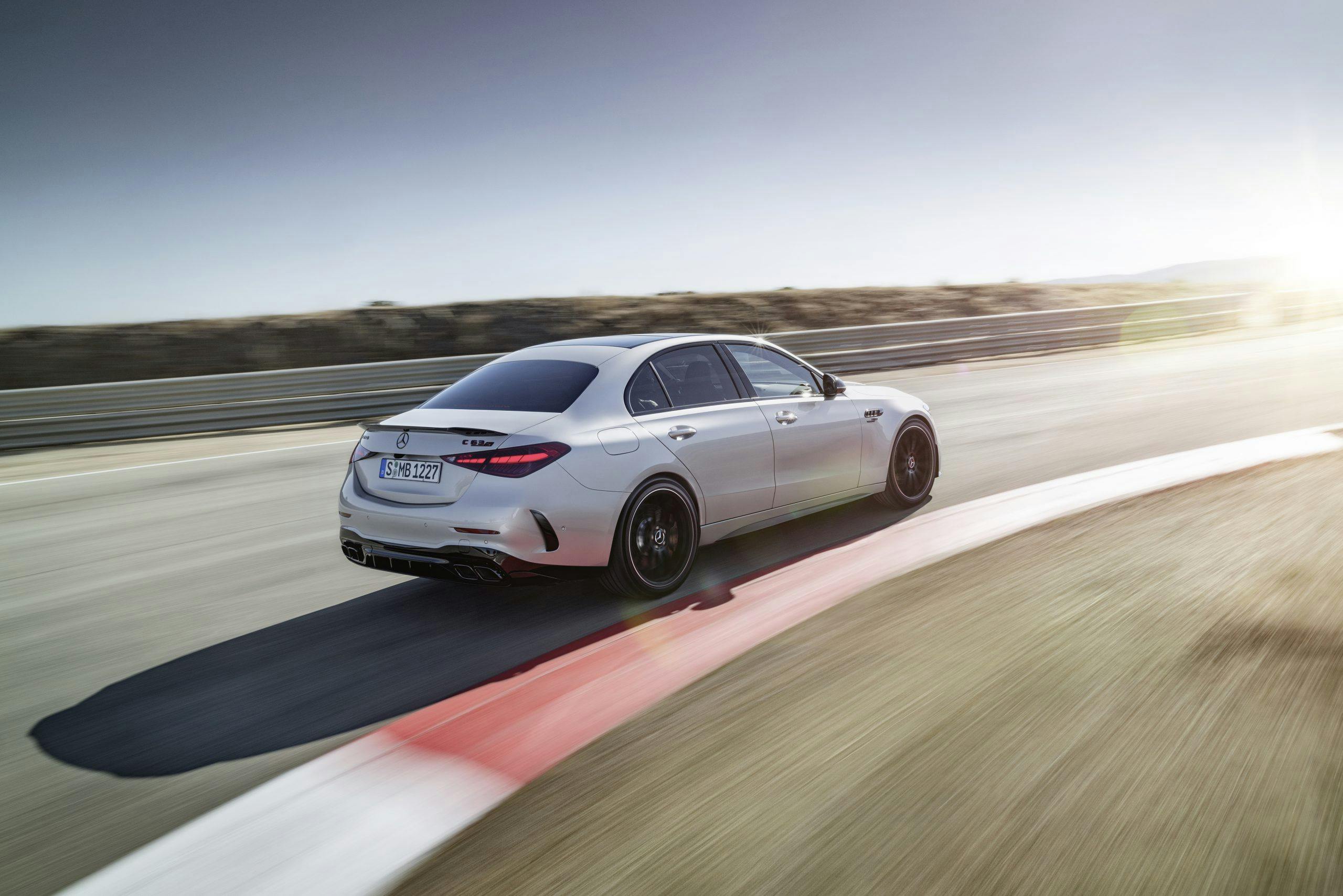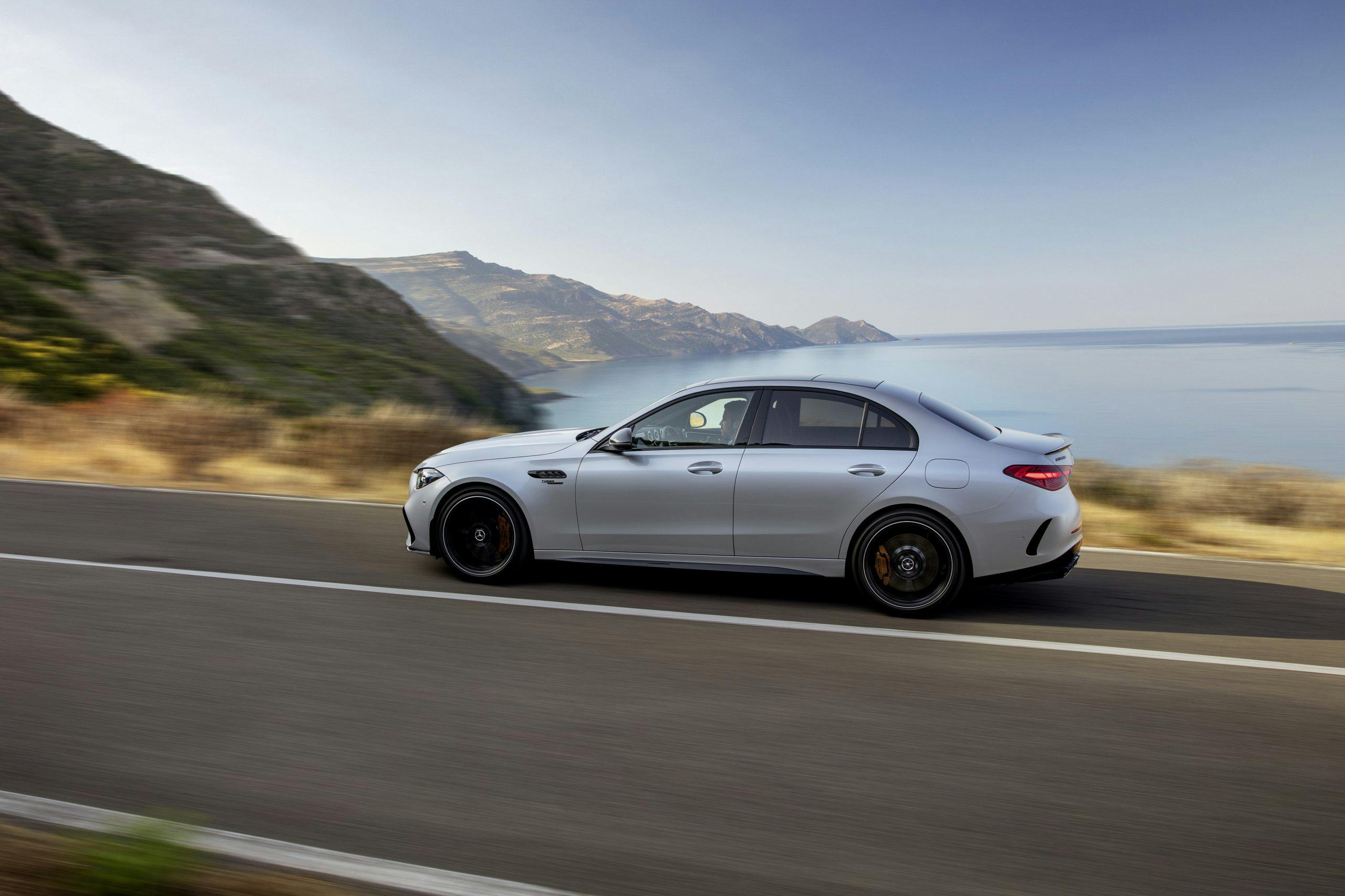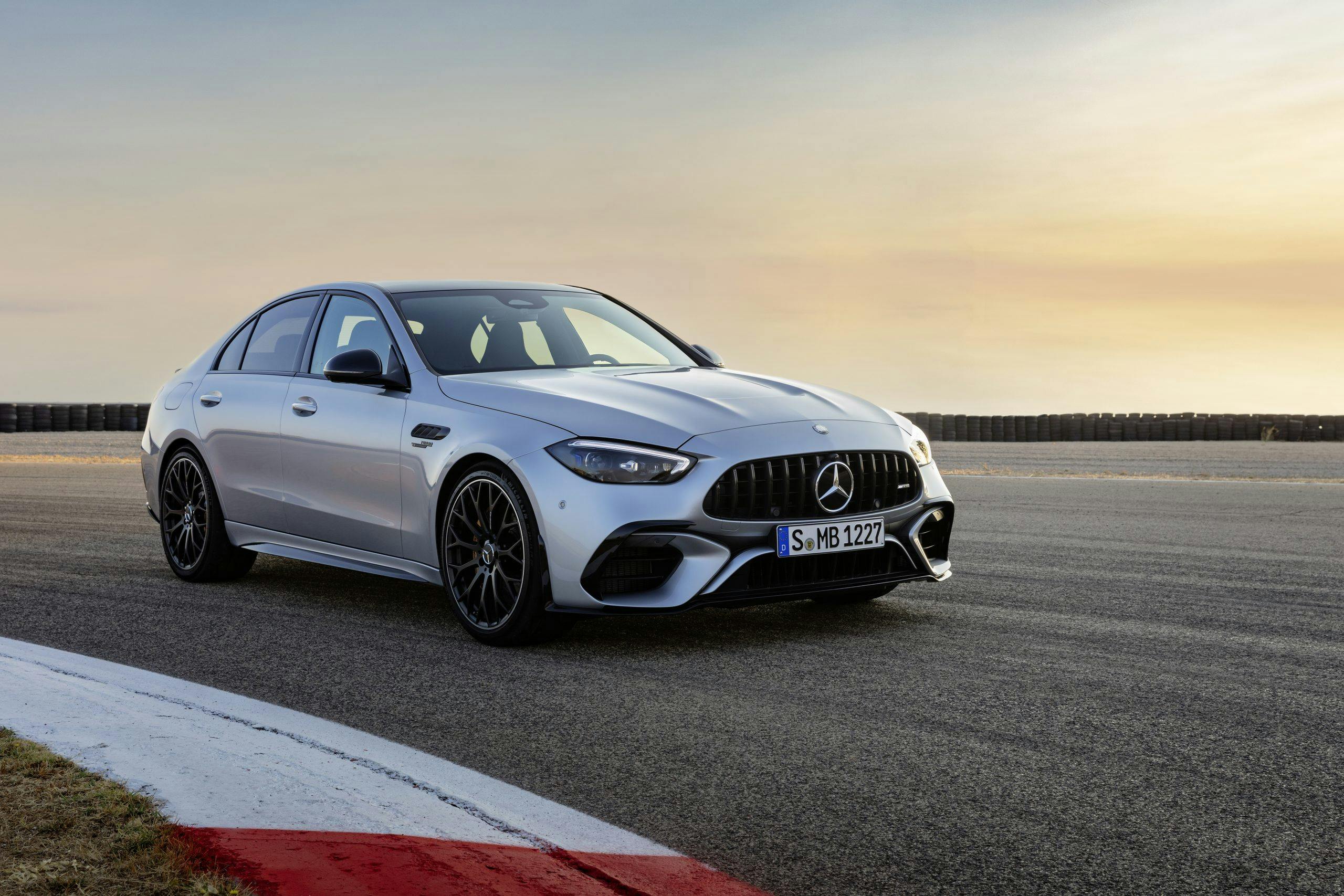Media | Articles
AMG’s top-dog C-Class loses V-8, gains 168 hp and a plug
If you crave power and tech, Mercedes’ most potent C-Class won’t disappoint. If you’re after a V-8? You’ve had since March of 2021 to discuss that in therapy.
There’s a special magic to a C-Class with an AMG-built V-8, with turbos or without. However, Mercedes’ skunkworks team is now pursuing a different alchemy: combustion plus electricity. We saw the first C-Class version of this recipe in February of this year in the C43 AMG, which pairs a 402-hp, turbocharged inline-four with a 48V mild-hybrid system. The “43” badge typically denotes the “bargain performance” model in the C-Class line, and now we meet the all-out model that puts it in perspective: The 2024 C 63 S E Performance.
Naturally, Mercedes will release pricing details later, but the 63 model’s claim to the C-Class crown is evident from output alone: 671 horsepower and 752 lb-ft of torque. That’s 168 more hp than the twin-turbo C 63 S that the 2024 model replaces. That eye-popping output is produced by a vastly different driveline: not a twin-turbo V-8, but a 469-hp version of Mercedes’ M139, turbocharged inline-four cylinder, paired with a electric motor mounted on the rear axle producing a continuous 94 hp and 236 lb-ft of torque. (E Performance. Get it?)
“Continuous” is a key word, since, like most electric motors on the market today, AMG’s permanently excited synchronous unit has two output figures. The limiting factor is cooling: AMG’s motor can actually produce 201 hp—but only for ten seconds at a time, or it risks overheating. The optimum balance of power and sustainable temperature dictates a continuous figure of 91 hp. If you’re familiar with a turbocharger “overboost” function, the tradeoff is similar.
Unlike the C 43 AMG, this hybrid system is a plug-in affair, capable of driving the car on battery juice exclusively if desired. Mercedes hasn’t yet specified the C 63’s electric-only range. What it has specified indicates some neck-snapping shenanigans: Using “Electric,” one of eight drive modes, you can hurtle to 81 mph using only battery-derived power. Other benefits of this rear-axle drive unit: all-wheel drive, thanks to a supplementary clutch-controlled transfer case; a flavor of one-pedal driving; as much as 2.5 degrees of rear steering, up to 62 mph; Drift Mode, details to come; and the possibility of the full $7500 EV tax credit.
Marketplace
Buy and sell classics with confidence

Inside, there’s a portrait-oriented touchscreen flowing along the car’s centerline to rise in front of the dash—most likely, it’s the 12.3-incher found in the S-Class. Behind the steering wheel is a separate screen for instrument-cluster duties. Our money is on the same, 10.25-inch display as on the 2018 C 63, running the latest MBUX software. Expect more details on standard versus optional amenities when Mercedes breaks its initial silence about price and fuel economy.
Those who remember the V-8 models may weep at this plug-in hybrid four-cylinder 63, but it’s worth remembering that younger generations of enthusiasts already speak turbo-four-cylinder—especially, those who are already drawn to the sedan format. When they land a job in pharmaceutical sales or corporate finance, they would have no reason to scorn a four-cylinder Mercedes boosted to high heaven and backfilled with electric torque. The magic will have changed, but “AMG” and “63” will still mean fast Benz.

